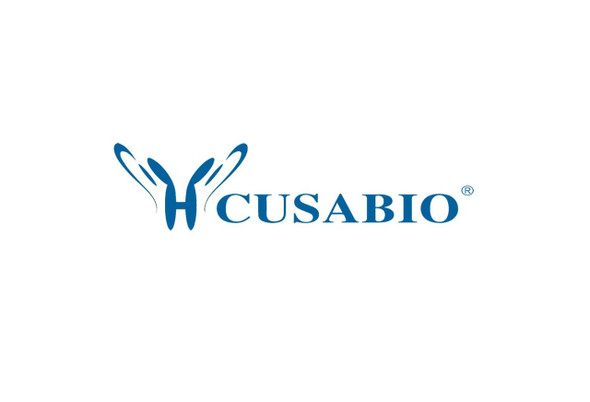Cusabio Human Recombinants
Recombinant Human Suppressor of cytokine signaling 1 (SOCS1) | CSB-YP022388HU
- SKU:
- CSB-YP022388HU
- Availability:
- 3 - 7 Working Days
Description
Recombinant Human Suppressor of cytokine signaling 1 (SOCS1) | CSB-YP022388HU | Cusabio
Alternative Name(s): JAK-binding protein ;JABSTAT-induced STAT inhibitor 1 ;SSI-1Tec-interacting protein 3 ;TIP-3
Gene Names: SOCS1
Research Areas: Immunology
Organism: Homo sapiens (Human)
AA Sequence: MVAHNQVAADNAVSTAAEPRRRPEPSSSSSSSPAAPARPRPCPAVPAPAPGDTHFRTFRSHADYRRITRASALLDACGFYWGPLSVHGAHERLRAEPVGTFLVRDSRQRNCFFALSVKMASGPTSIRVHFQAGRFHLDGSRESFDCLFELLEHYVAAPRRMLGAPLRQRRVRPLQELCRQRIVATVGRENLARIPLNPVLRDYLSSFPFQI
Source: Yeast
Tag Info: N-terminal 6xHis-tagged
Expression Region: 1-211aa
Sequence Info: Full Length
MW: 25.6 kDa
Purity: Greater than 90% as determined by SDS-PAGE.
Relevance: SOCS family proteins form part of a classical negative feedback syst that regulates cytokine signal transduction. SOCS1 is involved in negative regulation of cytokines that signal through the JAK/STAT3 pathway. Through binding to JAKs, inhibits their kinase activity. In vitro, also suppresses Tec protein-tyrosine activity. Appears to be a major regulator of signaling by interleukin 6 (IL6) and leukia inhibitory factor (LIF). Regulates interferon-gamma mediated sensory neuron survival . Probable substrate recognition component of an ECS (Elongin BC-CUL2/5-SOCS-box protein) E3 ubiquitin ligase complex which mediates the ubiquitination and subsequent proteasomal degradation of target proteins. Ses to recognize JAK2. SOCS1 appears to be a negative regulator in IGF1R signaling pathway.
Reference: The SOCS box of SOCS-1 accelerates ubiquitin-dependent proteolysis of TEL-JAK2.Kamizono S., Hanada T., Yasukawa H., Minoguchi S., Kato R., Minoguchi M., Hattori K., Hatakeyama S., Yada M., Morita S., Kitamura T., Kato H., Nakayama K.I., Yoshimura A.J. Biol. Chem. 276:12530-12538(2001)
Storage: The shelf life is related to many factors, storage state, buffer ingredients, storage temperature and the stability of the protein itself. Generally, the shelf life of liquid form is 6 months at -20?/-80?. The shelf life of lyophilized form is 12 months at -20?/-80?.
Notes: Repeated freezing and thawing is not recommended. Store working aliquots at 4? for up to one week.
Function: SOCS family proteins form part of a classical negative feedback system that regulates cytokine signal transduction. SOCS1 is involved in negative regulation of cytokines that signal through the JAK/STAT3 pathway. Through binding to JAKs, inhibits their kinase activity. In vitro, also suppresses Tec protein-tyrosine activity. Appears to be a major regulator of signaling by interleukin 6 (IL6) and leukemia inhibitory factor (LIF). Regulates interferon-gamma mediated sensory neuron survival (By similarity). Probable substrate recognition component of an ECS (Elongin BC-CUL2/5-SOCS-box protein) E3 ubiquitin ligase complex which mediates the ubiquitination and subsequent proteasomal degradation of target proteins. Seems to recognize JAK2. SOCS1 appears to be a negative regulator in IGF1R signaling pathway.
Involvement in disease:
Subcellular Location: Nucleus, Cytoplasmic vesicle
Protein Families: SOCS1 family
Tissue Specificity: Expressed in all tissues with high expression in spleen, small intestine and peripheral blood leukocytes.
Paythway: Jak-STATsignalingpathway
Form: Liquid or Lyophilized powder
Buffer: If the delivery form is liquid, the default storage buffer is Tris/PBS-based buffer, 5%-50% glycerol. If the delivery form is lyophilized powder, the buffer before lyophilization is Tris/PBS-based buffer, 6% Trehalose, pH 8.0.
Reconstitution: We recommend that this vial be briefly centrifuged prior to opening to bring the contents to the bottom. Please reconstitute protein in deionized sterile water to a concentration of 0.1-1.0 mg/mL.We recommend to add 5-50% of glycerol (final concentration) and aliquot for long-term storage at -20?/-80?. Our default final concentration of glycerol is 50%. Customers could use it as reference.
Uniprot ID: O15524
HGNC Database Link: HGNC
UniGene Database Link: UniGene
KEGG Database Link: KEGG
STRING Database Link: STRING
OMIM Database Link: OMIM









